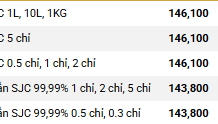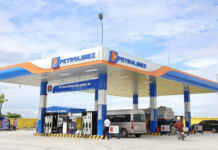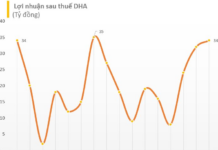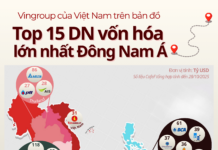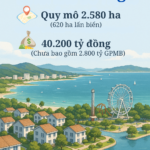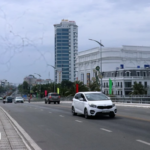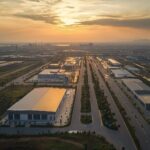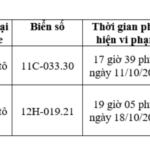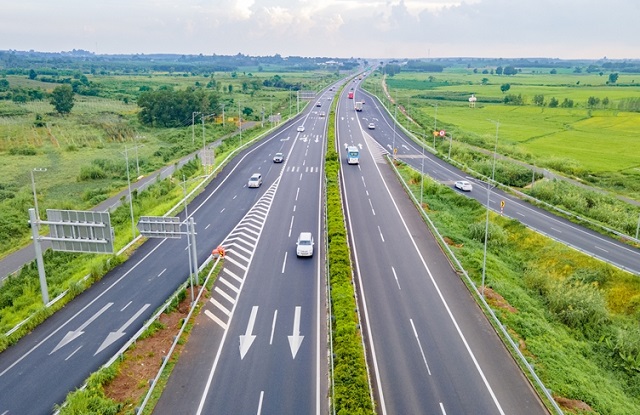
The expressway system has witnessed remarkable development, with the total network length more than 20 times that of the 2001-2010 period
|
The Vietnam Road Administration has recently sent a document to the Ministry of Construction, contributing ideas to the formulation of the Scheme “Developing a synchronous and modern infrastructure system to turn our country into a developed country by 2045.”
Remarkable Development of the Expressway System
According to the agency, as of August 2025, the country has nearly 611,000 kilometers of roads, an increase of 77% compared to 2010. Of this, there are over 25,700 kilometers of national highways, accounting for 4.22%, an increase of 49% compared to 2010. The expressway system has 17 routes spanning 2,268 kilometers, or 0.37% of the total, while the local road system is nearly 583,000 kilometers long, accounting for over 95%, an increase of 84% compared to 2010.
The North-South Expressway in the East, urban belt routes, and a series of cross-country and inter-regional routes are being urgently implemented, with approximately 3,000 kilometers expected to be put into operation by the end of 2025.
According to the Vietnam Road Administration, in the 2021-2025 period, the orientation of “unlocking all resources, with public investment leading and stimulating private investment” has created an impressive development in the transport infrastructure sector. The total investment capital for roads in this period is expected to reach about VND 450,000 billion, mainly from the state budget for expressway projects.
Previously, the 2011-2015 period was considered a “bright spot” when a series of breakthrough policies mobilized about VND 380,000 billion from non-state budget capital, 2.1 times higher than in the 2006-2010 period and 3.7 times higher than in the 2001-2010 period.
As a result, the expressway system has made remarkable progress, with the total network length more than 20 times that of the 2001-2010 period, contributing to connecting regions, gateways, seaports, and airports, thereby promoting socio-economic development.
However, the Vietnam Road Administration also frankly admitted that transport infrastructure remains incomplete, and the expressway system falls short of development requirements, with uneven distribution among regions. The connectivity between road transport and other modes of transport, such as railways, inland waterways, and maritime transport, has not met expectations. The local road system, especially in remote, border, and island areas, still faces many shortcomings.
Other limitations include the low quality of planning, lack of linkage between transport and logistics infrastructure, and unachieved targets for restructuring the transport market share. The reduction in the proportion of road transport is also limited.
In addition, budget capital only meets about 20% of the demand, and the mechanism for attracting socialization is unstable, while access to credit is difficult. Meanwhile, the annual maintenance cost only meets about 40% of the demand. The main reason stems from the limitations in strategy formulation, planning, and planning, lacking long-term vision, which leads to difficulties in consulting, investment prioritization, and efficient use of capital.
Goal of 9,000 Kilometers of Expressways by 2045
To achieve the goal of having a modern road network by 2045, connecting and developing reasonably between modes of transport, and completing the construction of 9,000 kilometers of expressways and investing in the construction and upgrade of 30,000 kilometers of national highways, the Vietnam Road Administration suggested giving priority to upgrading the North-South Expressway in the East to a minimum of six lanes, striving to complete it before 2035. At the same time, the North-South Expressway in the West should be implemented according to the master plan, ensuring the connectivity of the route by 2035.
In the Northern region, priority should be given to the Hanoi urban belt routes (Ring Road 4 and 5), radial routes, and routes connecting major seaports, with about 1,400 kilometers expected to be put into operation by 2035 and about 2,300 kilometers by 2045.
In the Central region, focus on investing in routes on the East-West Economic Corridor, connecting seaports with international border gates, putting into operation about 700 kilometers by 2035 and about 1,500 kilometers by 2045.
The Southern region will complete the expressway network in the Ho Chi Minh City metropolitan area, connecting seaports and international border gates, with a total length of about 800 kilometers in operation by 2035 and 1,400 kilometers by 2045.
Synchronous Investment in the National Highway System Regarding national highways, the goal is to complete the investment and operation of National Highway 1 from Lang Son to Ca Mau, with a total length of about 2,482 kilometers, meeting the standards of Grade III roads with four lanes. The Ho Chi Minh Road, with a length of 1,762 kilometers, should meet the standards of 2 to 4 lanes.
At the same time, upgrade 21 key national highways in the North, 24 in the Central region, and 17 in the South to a minimum scale of 2 to 6 lanes.
According to calculations, the total investment capital need for roads by 2045 is about VND 2.6 million billion, of which the 2026-2030 period needs more than VND 1,000 billion, and the 2031-2050 period needs VND 1.2 million billion. Priority projects such as the North-South Expressway in the East, the North-South Expressway in the West, expressways in the three regions, National Highway 1, and the Ho Chi Minh Road account for more than VND 1.7 million billion.
Diversifying Resources and Prioritizing PPP
To achieve these goals, the Vietnam Road Administration proposed focusing on building mechanisms and policies to mobilize resources and exploit the added value of infrastructure after investment through public-private partnership (PPP), build-transfer (BT) contracts, and transit-oriented development (TOD) models. At the same time, it is necessary to effectively exploit road toll revenue. In addition, ensure the progress of public investment capital disbursement, avoid spreading it too thinly, and give priority to expressway projects, National Highway 1, and the Ho Chi Minh Road.
The Vietnam Road Administration also emphasized the need to review and complete the legal system on investment, PPP, and related fields, towards streamlining procedures, harmonizing interests, and creating conditions to attract social resources for the development of road infrastructure, thereby contributing to enhancing the country’s competitiveness.
– 09:40 01/09/2025
The Two $3 Billion Coastal Metropolis Projects: What Makes Them So Special?
Introducing our two visionary projects: the Tu Bong New Coastal City and the Dam Mon New Coastal City. With a sprawling 620-hectare and 82-hectare reclamation respectively, these transformative developments are set to redefine the urban landscape and unlock the vast potential of Vietnam’s stunning coastline.
Optimizing Capital Allocation: Redirecting Funds from Underperforming Projects to Efficiently Executed Ventures
Vice Prime Minister Nguyen Hoa Binh has instructed a review of slow-deploying projects with a view to reallocating capital to more efficient ventures. This strategic move aims to boost socio-economic development by prioritizing capital-efficient, high-impact projects, including those of national importance, key infrastructure developments, and inter-regional connectivity initiatives, such as highways and regional networks.
The Next Industrial Revolution: Unveiling Quang Binh’s 450-Hectare Industrial Hub
Vice Prime Minister Tran Hong Ha has recently signed Decision No. 1388/QD-TTg, dated November 15, 2024, approving the investment policy for the Cam Lien Industrial Park infrastructure construction and business project in Quang Binh Province.









